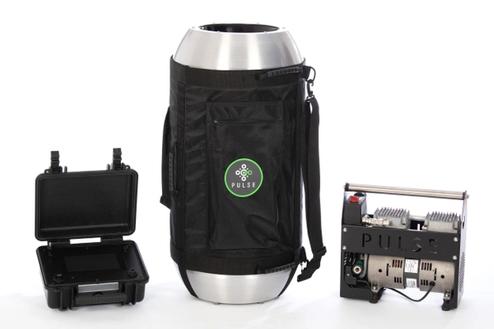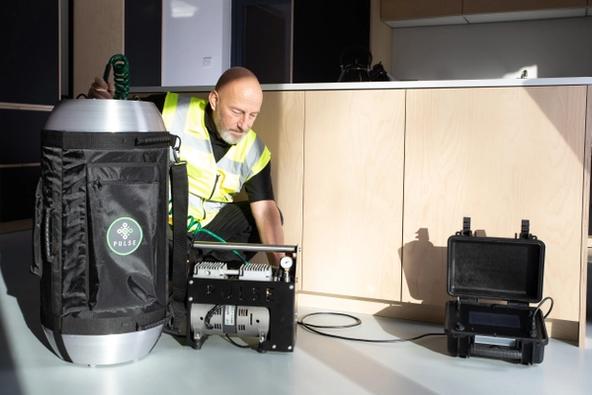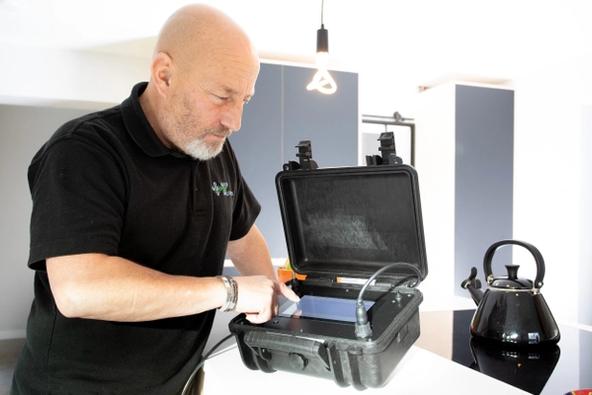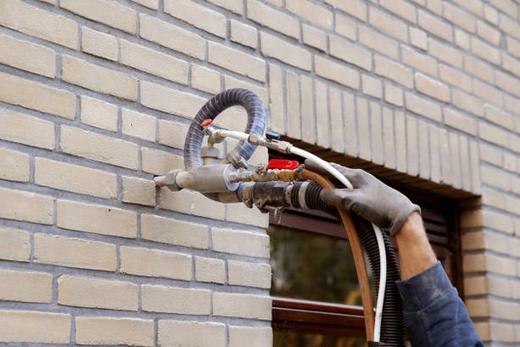Pulse is a portable compressed air-based system that is used to measure the air leakage of a building or enclosure at a near ambient pressure level (4 pascals). A Pulse system comprises an air receiver, air compressor and a touch screen control unit.
The test occurs entirely within a building envelope and requires no penetrations to the outside or any external pressure tapings. The equipment is positioned approximately in the centre of the ground floor or enclosure being tested in order to ensure an evenly distributed and non-turbulent burst of air release. The system then accounts for wind and buoyancy effects by measuring background pressure before and after a Pulse test and predicting pressure trends during the test period using these measured background pressures.
Pulse measures building leakage across a range of low pressures (2-15 Pa) in a dynamic manner. This involves high-frequency logging of data points over a short 6-15 seconds test period, with results measured at 4Pa but also extrapolated and presented as 50Pa equivalents. Since the test exerts no abnormal pressure or de-pressure loads on the building envelope, there is no requirement for combined pressurisation and depressurisation tests as is required using the traditional blower door fan method.
The air leakage rate at 4Pa, as measured directly by the Pulse method, is widely considered the typical pressure differential across a building envelope over the course of the seasons (i.e. whole year average). The key benefit of Pulse is that it provides an air change rate measurement that is representative of normal inhabited conditions, helping to improve understanding of in-use energy performance and true building ventilation needs.










